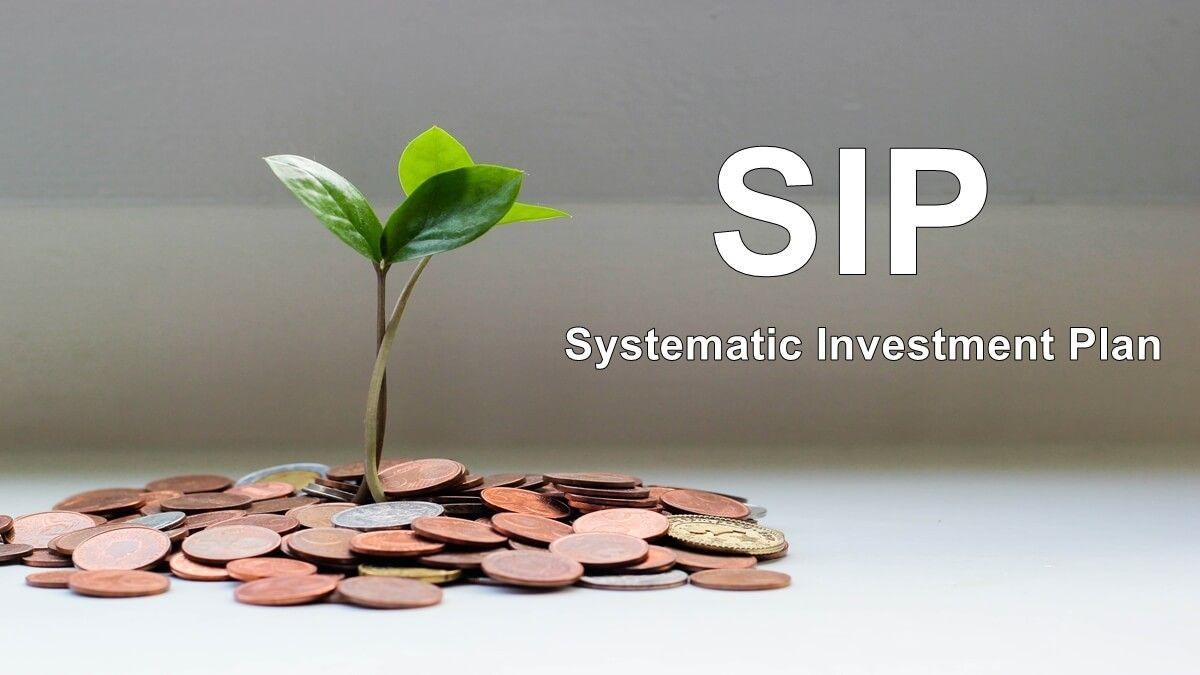In today’s dynamic and digitally driven economy, investors have a wide range of opportunities to grow their wealth. But with so many options available, the pressing question remains: What are the most profitable types of investment today?
This article dives deep into the investment avenues that are generating substantial returns in 2025, helping you make informed decisions based on your goals, risk appetite, and market trends.
Key Takeaways
- Stock markets, real estate, and mutual funds are still reliable for strong returns.
- Cryptocurrencies and startups offer high reward but come with high risk.
- Green and ESG investments are growing rapidly with sustainable returns.
- Diversification is the cornerstone of a profitable investment strategy.
- Align your investments with your goals, timeline, and risk appetite.
Stock Market Investments
Why It’s Profitable:
Equities have historically delivered some of the highest returns over the long term. With AI, automation, and green technologies reshaping industries, many stocks are seeing record-breaking growth.
Key Segments:
- Blue-chip stocks (e.g., Apple, Microsoft)
- Growth stocks (e.g., Tesla, Nvidia)
- Dividend stocks (e.g., Procter & Gamble, Johnson & Johnson)
Average Return:
7% to 15% annually (long term)
Risks:
- Market volatility
- Economic downturns
Real Estate Investments
Why It’s Profitable:
Real estate remains a cornerstone of wealth creation. In 2025, properties in emerging cities and eco-friendly developments are offering high ROI due to increased demand.
Key Segments:
- Residential properties
- Commercial real estate
- REITs (Real Estate Investment Trusts)
Average Return:
6% to 12% annually (can be higher in developing areas)
Risks:
- Illiquidity
- Market crashes
- Maintenance costs
Cryptocurrency and Blockchain Assets
Why It’s Profitable:
Despite volatility, crypto assets like Bitcoin and Ethereum have shown incredible long-term appreciation. Blockchain technology also supports DeFi and NFTs, offering new avenues for returns.
Key Segments:
- Major coins (BTC, ETH)
- Altcoins
- Staking and yield farming
Average Return:
Highly variable (10% to 200%+ in bull markets)
Risks:
- Extreme volatility
- Regulatory changes
- Security concerns
Mutual Funds and ETFs (Exchange-Traded Funds)
Why It’s Profitable:
Managed by professionals, these pooled investment vehicles provide diversification and lower risk. ETFs tracking tech, green energy, or healthcare sectors are outperforming traditional options.
Key Segments:
- Index funds
- Sector-specific ETFs
- Actively managed mutual funds
Average Return:
6% to 10% annually
Risks:
- Fund management fees
- Market dependency
Peer-to-Peer Lending (P2P)
Why It’s Profitable:
Platforms like LendingClub and Prosper allow individuals to lend money to borrowers at interest rates often higher than traditional savings accounts.
Key Segments:
- Consumer loans
- Business loans
Average Return:
8% to 12% annually
Risks:
- Borrower default
- Platform reliability
Precious Metals (Gold, Silver, etc.)
Why It’s Profitable:
These assets hedge against inflation and currency devaluation. With rising global uncertainty, gold and silver are becoming safe havens for investors.
Key Segments:
- Physical gold and silver
- ETFs based on metals
- Mining stocks
Average Return:
5% to 10% annually (varies based on global conditions)
Risks:
- Price fluctuations
- Storage and insurance costs
Green and ESG Investments
Why It’s Profitable:
As sustainability becomes mainstream, companies prioritizing environmental, social, and governance (ESG) standards are seeing significant investor interest and profits.
Key Segments:
- Clean energy stocks
- Green ETFs
- Sustainable mutual funds
Average Return:
7% to 13% annually
Risks:
- Policy shifts
- Limited historical data for newer companies
Venture Capital and Startups
Why It’s Profitable:
Investing in early-stage companies offers massive upside if the startup succeeds. Sectors like healthtech, AI, and space tech are booming.
Key Segments:
- Tech startups
- Biotech firms
- Fintech platforms
Average Return:
20%+ (but varies greatly; high risk)
Risks:
- High failure rate
- Illiquidity
- Long investment horizon
Is Diversification the Secret to Investment Success?
Long Description:
Explore how diversifying across asset classes—stocks, bonds, real estate, and crypto—can mitigate risk and enhance long-term returns. Cover strategies like the 60/40 portfolio, modern portfolio theory, and asset correlation.
Which Is Better: Active or Passive Investing in 2025?

Long Description:
Compare active fund management with passive ETFs and index funds. Discuss performance trends, cost differences, taxation, and ideal investor profiles for each. Use examples of top funds to illustrate outcomes.
How Do You Build a Balanced Investment Portfolio from Scratch?
Long Description:
Guide beginners in allocating funds across stocks, mutual funds, bonds, gold, and real estate. Include asset allocation models by age group, risk tolerance levels, and investment goals.
Are Green Investments the Future of Profitable Investing?
Long Description:
Focus on ESG (Environmental, Social, and Governance) investing. Explore solar energy stocks, electric vehicles, clean tech ETFs, and sustainable bonds. Include growth forecasts and major institutional interest.
What Are the Top Investment Trends Shaping 2025 and Beyond?
Long Description:
Cover AI, blockchain, metaverse, green energy, biotech, and decentralized finance as growing sectors. Analyze where VC funds are moving and what retail investors should watch.
Is Real Estate Still a Good Investment in the Digital Era?
Long Description:
Break down residential, commercial, and REIT investments. Highlight digital tools for property investing, trends in co-living, and how AI is transforming real estate analysis.
How Do Fixed-Income Investments Perform Against Inflation?
Long Description:
Detail types like government bonds, corporate bonds, FDs, and inflation-linked securities. Show how they fit in a defensive strategy and protect wealth over time.
Is Investing in Gold and Silver Still Relevant in Modern Portfolios?
Long Description:
Discuss historical performance, current demand, ETF vs. physical vs. sovereign gold bonds, and how precious metals act as hedges during crises.
What Role Does Cryptocurrency Play in a Long-Term Investment Plan?
Long Description:
Debate the role of Bitcoin, Ethereum, and altcoins as speculative vs. legitimate assets. Include staking, DeFi yield farming, and how to manage volatility within a portfolio.
Are You Making These Common Investment Mistakes?
Long Description:
Highlight errors like emotional investing, chasing trends, lack of diversification, ignoring fees, or timing the market. Offer actionable tips to avoid them.
How Do You Choose the Right Investment Based on Your Age?
Long Description:
Dive into life-stage investing: aggressive strategies in your 20s–30s, balanced plans in your 40s–50s, and income-focused investments post-retirement. Include portfolio allocation examples and risk mitigation techniques by decade.
Are Mutual Funds or ETFs a Better Choice for New Investors?
Long Description:
Compare mutual funds and ETFs on cost, flexibility, risk, taxation, and long-term returns. Include best-in-class fund examples and guidance on SIPs vs. lump-sum investing.
Can Real Estate Crowdfunding Be a Game-Changer for Small Investors
Long Description:
Explore how platforms allow small investors to access large real estate projects. Discuss minimum investment thresholds, returns, risks, and how it compares to direct property ownership and REITs.
How Can You Build Passive Income Through Smart Investments?
Long Description:
Explain how dividends, real estate rental income, bonds, REITs, and P2P lending can create passive income streams. Share real-life examples, income projections, and maintenance tips.
Is Investing in Foreign Markets Worth the Risk?
Long Description:
Analyze global diversification strategies using international ETFs, ADRs, or direct foreign stocks. Highlight emerging markets, currency risk, taxation, and political/economic influences.
How Do Behavioral Biases Affect Investment Decisions?

Long Description:
Cover cognitive biases like loss aversion, herd mentality, and confirmation bias. Share how these can sabotage returns and how to build a rational, disciplined investment approach.
What Are the Best Investment Options for Tax Savings in 2025?
Long Description:
Detail instruments like ELSS mutual funds, PPF, NPS, ULIPs, and tax-free bonds. Compare their lock-in periods, returns, and tax benefits under current laws.
Is Investing in Commodities Still Profitable in a Digital Economy
Long Description:
Analyze the role of oil, agricultural products, and metals in hedging inflation or market shocks. Compare futures trading, commodity ETFs, and physical ownership.
Can Artificial Intelligence Improve Investment Strategies?
Long Description:
Explore AI-powered trading platforms, robo-advisors, and predictive analytics. Discuss how automation is changing portfolio management, risk assessment, and investor behavior.
How to Evaluate Risk and Return Across Different Investment Types?
Long Description:
Offer a framework to compare investments on risk, volatility, liquidity, and return potential. Include charts, risk-return matrices, and investor profiling tools.
Is the SIP Route the Smartest Way to Invest in 2025?
Long Description:
Explain how Systematic Investment Plans (SIPs) help build wealth over time through rupee-cost averaging and compounding. Analyze historical performance, ideal fund types for SIPs, frequency choices, and why SIPs are favored in volatile markets.
How Do Inflation and Interest Rates Affect Investment Returns?
Long Description:
Dive deep into how rising inflation erodes purchasing power and how interest rate hikes affect bonds, real estate, stocks, and gold. Include charts, central bank policies, and strategies to hedge against inflation using TIPS, gold, and real assets.
Can You Rely on Bonds for Retirement Income?
Long Description:
Evaluate government and corporate bonds for post-retirement income. Discuss bond ladders, annuities, and interest income strategies. Explain risks like interest rate sensitivity, credit default, and inflation impact.
How Can Hybrid Funds Offer the Best of Both Worlds?
Long Description:
Discuss hybrid mutual funds that combine equity and debt instruments. Break down types like aggressive hybrid funds, balanced funds, and arbitrage funds. Explain asset allocation benefits and risk moderation.
What Role Do Alternative Investments Play in a Modern Portfolio?
Long Description:
Explore non-traditional assets like hedge funds, private equity, collectibles, art, farmland, and wine. Explain how ultra-wealthy investors use alternatives for portfolio diversification and how platforms now democratize access.
Should You Invest in IPOs or Wait?
Long Description:
Explain Initial Public Offerings and how retail investors can participate. Discuss the risks, hype vs. reality, lock-in periods, underperformance trends, and how to analyze an IPO’s fundamentals.
How Can You Use Dollar-Cost Averaging for Safer Investing?
Long Description:
Teach how consistent investments over time reduce the impact of market volatility. Provide real-life comparisons between lump-sum investing and dollar-cost averaging across mutual funds and ETFs.
Is Investing in Blue-Chip Stocks a Safer Path to Wealth?
Long Description:
Define what makes a stock “blue-chip.” Examine how these companies offer stability, dividends, and long-term growth. Compare performance with growth and small-cap stocks. Include a list of top blue-chip picks in 2025.
How to Use REITs for Real Estate Investment Without Buying Property
Long Description:
Detail how Real Estate Investment Trusts allow exposure to real estate without the hassles of property ownership. Cover types (equity, mortgage, hybrid), tax implications, yields, and REIT performance in different market cycles.
Can You Build Wealth Through Dividend Investing Alone?
Long Description:
Explore the strategy of reinvesting dividends from high-yield stocks or ETFs. Discuss compound growth, dividend aristocrats, payout ratios, and how to build a portfolio that generates monthly or quarterly cash flow.
What Are the Best Investment Options for First-Time Investors?
Long Description:
This article will act as a beginner’s guide, explaining low-risk and accessible investment types like SIPs, mutual funds, index ETFs, recurring deposits, and robo-advisors. It will also provide a step-by-step roadmap to building a first portfolio, common mistakes to avoid, and tips on setting realistic financial goals.
Is Investing in International Mutual Funds Worth the Currency Risk?
Long Description:
Analyze mutual funds that invest in global markets (like US tech, European bonds, or Asian emerging markets). Discuss diversification benefits, currency exchange risks, taxation rules, and how international funds compare to local alternatives in terms of returns.
How Can You Turn Small Monthly Investments into Big Long-Term Gains?
Long Description:
Demonstrate the power of compounding using SIPs, gold savings schemes, or recurring stock purchases. Include investment calculators, growth tables, case studies, and mindset shifts that help low-income earners build long-term wealth.
Are Index Funds Still the Best Long-Term Investment?
Long Description:
Explore how index funds like Nifty 50 or S&P 500 consistently outperform most active funds over time. Include cost-benefit analysis, historical data, and investor psychology. Also compare with thematic ETFs and actively managed funds.
How Can Millennials and Gen Z Plan Smarter Investments?
Long Description:
Focus on young investors’ behavior, digital-first investing platforms, ESG priorities, and micro-investments. Discuss trends like crypto, fractional shares, side hustles turning into investments, and long-term retirement planning through NPS or EPF.
Is Gold a Reliable Investment in Times of Crisis?
Long Description:
Analyze gold’s performance during financial downturns, pandemics, and inflation surges. Compare physical gold, digital gold, sovereign gold bonds, and gold ETFs. Explain why central banks still hold gold and how retail investors can hedge.
How to Invest for Major Life Goals: Home, Wedding, or Retirement
Long Description:
Break down goal-based investing by timelines—short-term (weddings), mid-term (home purchase), and long-term (retirement). Suggest ideal instruments for each horizon like PPF, ULIPs, SIPs, gold, or FDs. Include planning tools and tracking methods.
What Investment Strategies Do the Wealthy Use That Others Don’t?
Long Description:
Explore how HNIs and ultra-rich individuals diversify across asset classes. Include private equity, hedge funds, tax-free municipal bonds, estate planning, and multi-currency portfolios. Offer simplified versions of these strategies for regular investors.
Can Investing in Art, Collectibles, and Luxury Assets Be Profitable?
Long Description:
Delve into passion investing—fine art, rare watches, vintage cars, NFTs, and whiskey. Explore market platforms, valuation techniques, authenticity concerns, and how these assets compare to traditional investments in volatility and liquidity.
How to Time Your Investment: Is There Ever a Perfect Moment?
Long Description:
Debunk myths around timing the market. Discuss timing vs. time in the market, dollar-cost averaging, historical bull/bear trends, and emotional investing. Provide decision-making frameworks based on indicators like PE ratios, economic data, or sector performance.
What Are the Best Investment Options for Monthly Income in 2025?
Long Description:
Focus on income-generating assets like dividend-paying stocks, rental properties, REITs, bond ladders, P2P lending, and monthly income mutual funds. Compare expected yields, risk levels, tax implications, and suitability for retirees or those seeking cash flow.
How Do Tax-Advantaged Investments Help You Build Wealth Faster?
Long Description:
Explore government-backed investment options like ELSS, PPF, NPS, tax-free bonds, and 401(k)/IRA equivalents (for global readers). Include comparisons on returns vs. tax savings, EEE vs. EET models, and how to plan yearly investment declarations efficiently.
Are High-Risk Investments Ever Worth It?
Long Description:
Analyze speculative but potentially high-return options like options trading, crypto altcoins, venture capital, and forex. Discuss risk management techniques, portfolio allocation rules (e.g., the 5% rule), and real-life case studies of big wins and losses.
How to Analyze an Investment Before You Commit
Long Description:
Teach readers how to evaluate any Investment opportunity using key metrics: ROI, CAGR, liquidity, volatility, risk-reward ratio, and alignment with financial goals. Include a checklist or framework for analyzing stocks, funds, real estate, or startups.
Also read : How Early Should You Start Investing for Your Child’s Future?
Conclusion
The landscape of profitable investments in 2025 is diverse, catering to every type of investor. While no investment is entirely without risk, the key lies in diversification, research, and aligning your investment choices with your personal financial goals.
Whether you’re a cautious investor looking for steady returns through mutual funds or a risk-taker eyeing the next tech unicorn, there’s a profitable path for you. The smartest investors are those who stay informed, adapt to change, and make calculated decisions based on both current trends and future potential.
FAQs
What is the safest yet profitable type of investment?
Answer: Mutual funds and ETFs, especially those tracking large indices, offer balanced returns with relatively lower risk.
Are cryptocurrencies a good investment in 2025?
Answer: Cryptocurrencies remain profitable but highly volatile. Allocate only a small portion of your portfolio unless you have high risk tolerance.
How do I decide which type of investment is right for me?
Answer: Consider your financial goals, risk tolerance, time horizon, and whether you want active or passive involvement.
Can I start investing with a small amount?
Answer: Yes. Mutual funds, ETFs, SIPs, and even fractional stocks or crypto platforms allow small initial investments.
Which type of investment is best for passive income?
Answer: Real estate (rental income), dividend-paying stocks, and P2P lending are great for generating steady passive income.
Are green investments profitable?
Answer: Yes. With global focus on sustainability, green investments are seeing increased demand and above-average returns.
What are the risks of investing in startups?
Answer: Startups have a high failure rate, can be illiquid, and require a longer time horizon, but can yield massive returns if successful.


